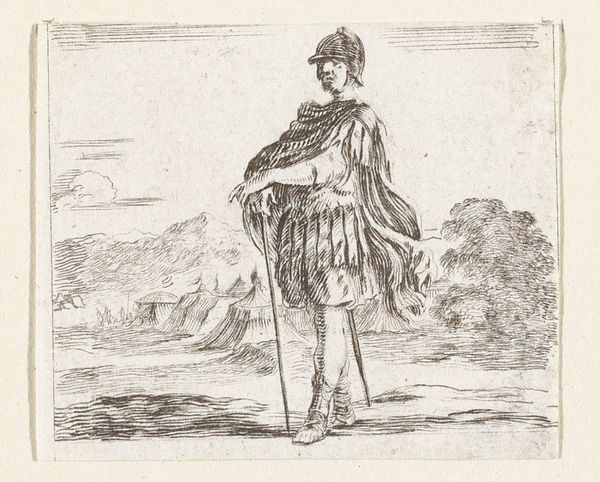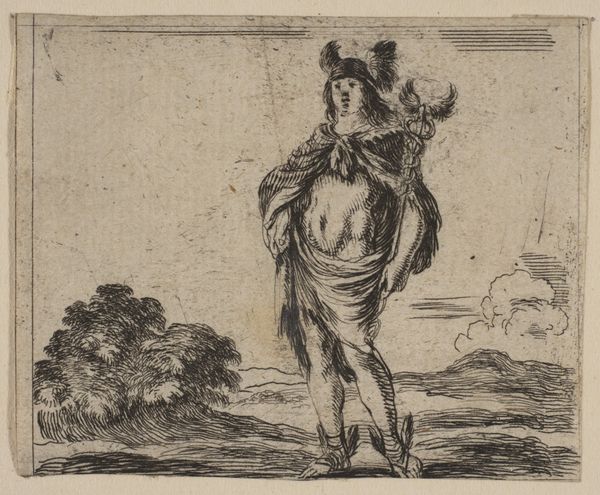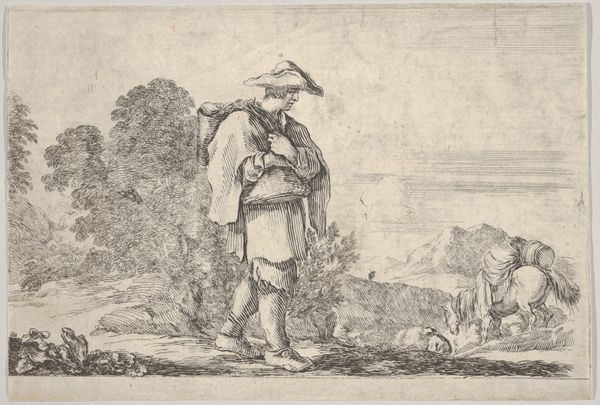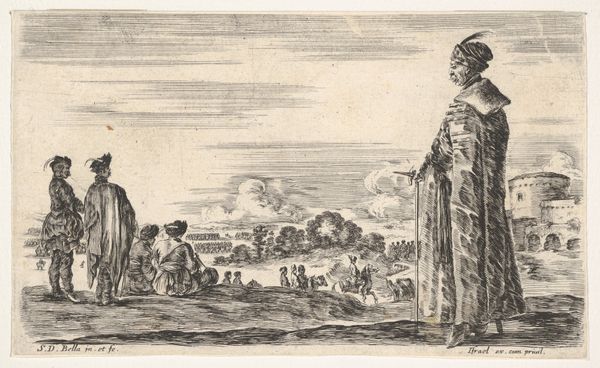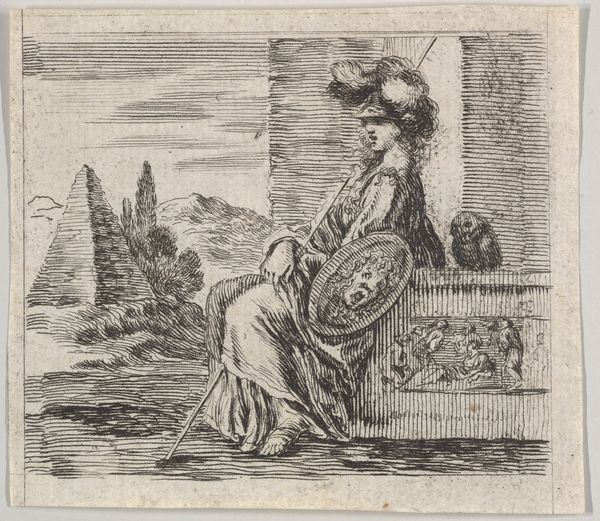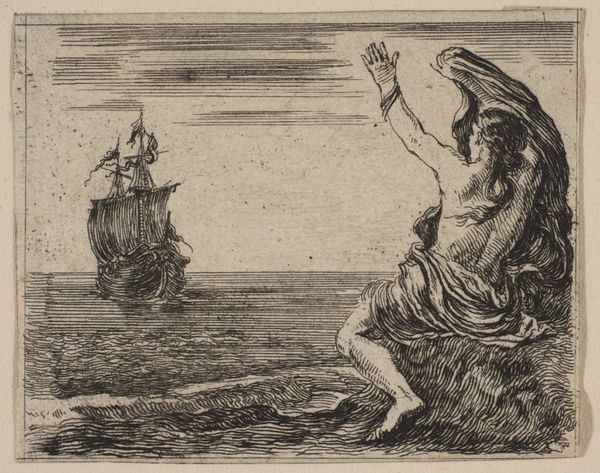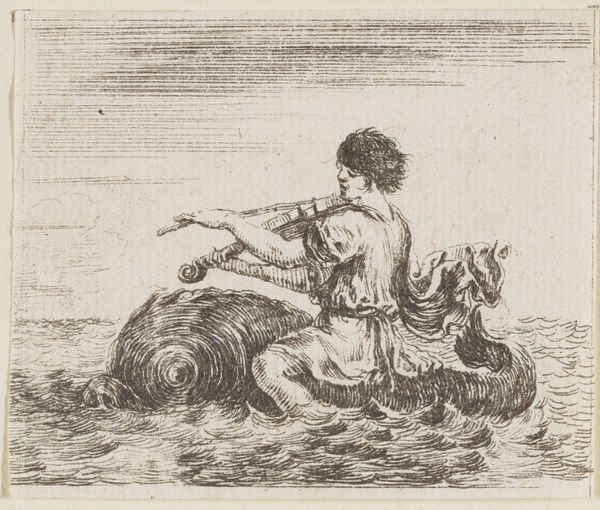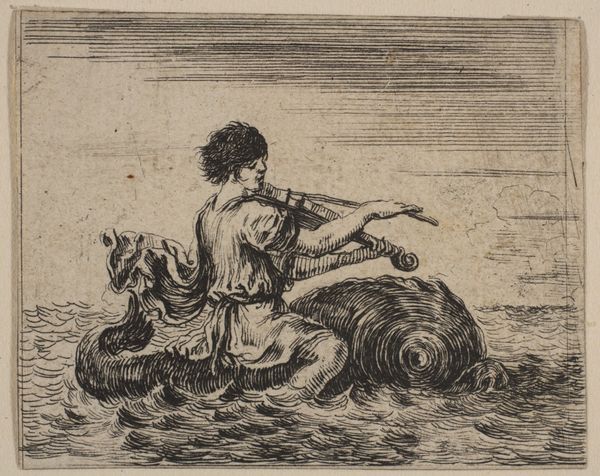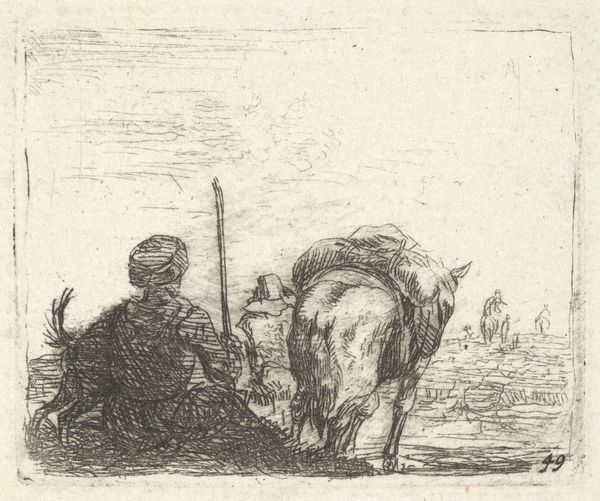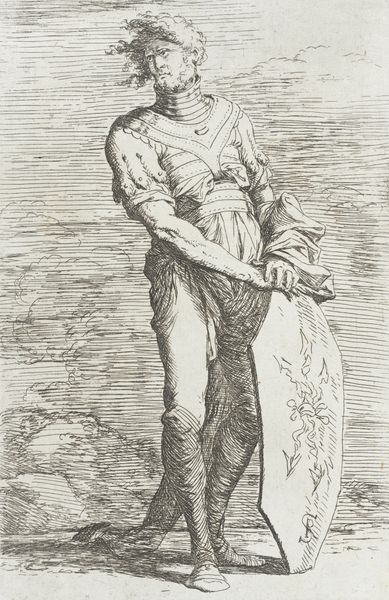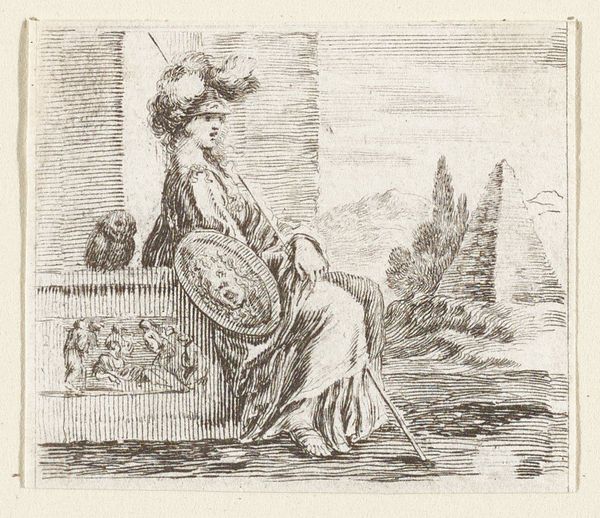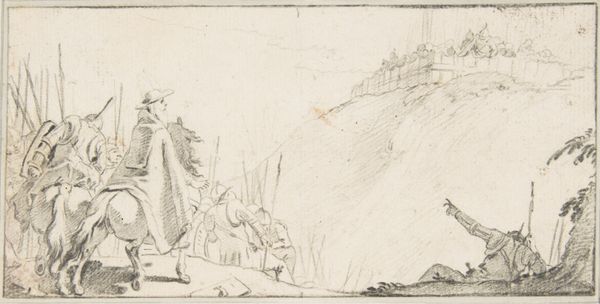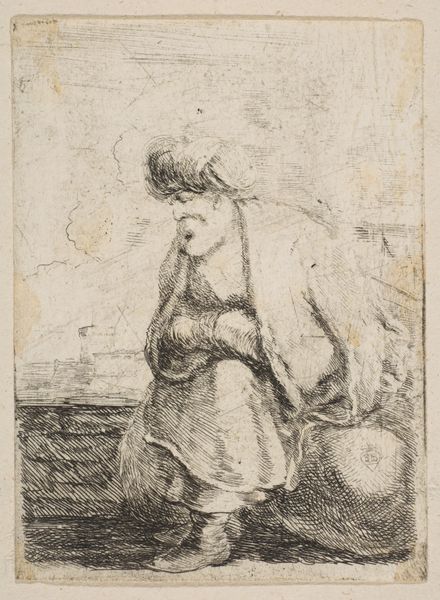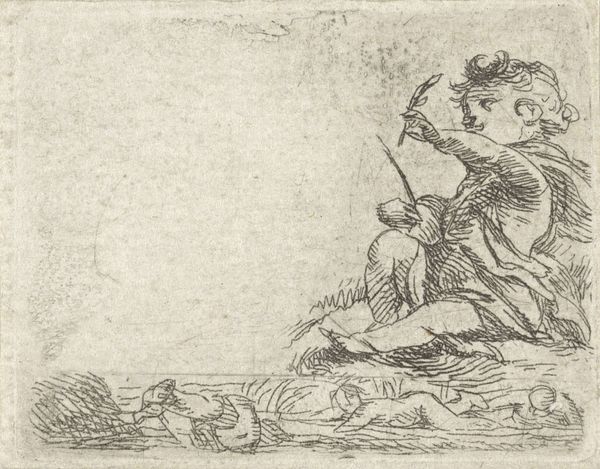
Mars, from 'Game of Mythology' (Jeu de la Mythologie) 1644
0:00
0:00
drawing, print, etching
#
drawing
#
allegory
#
baroque
# print
#
etching
#
figuration
#
history-painting
Dimensions: Sheet: 1 7/8 × 2 3/8 in. (4.8 × 6 cm)
Copyright: Public Domain
Curator: Standing before us is "Mars, from 'Game of Mythology'," a 1644 etching by Stefano della Bella. Editor: He looks…bored? The god of war appears rather melancholy, leaning on that staff. It's a far cry from the usual depictions of carnage and glory. Curator: Della Bella had a knack for subverting expectations. This wasn't intended as grand history painting, but a playing card design. Think of it: a decorative element hinting at larger power dynamics. Editor: Right, this is Baroque, dripping in allegory, yet also meant to be playfully collected. Who gets to wield power, who are the game's pawns, etc. What interests me is seeing him not actively making war, but standing amidst its theatre. Curator: The detailed lines of the etching, typical of della Bella, provide a subtle commentary, perhaps even critique. The distant tents hint at active military camps. A silent portrait before battle. He’s almost in a costume drama instead of ready for a theatre of war. Editor: Absolutely. And this “costume,” with its ornate detailing, reinforces this tension between the brutality of war and the stylish consumption that underpinned so much power. A game within a game, if you will. You have those details, the mountains, the helmet's cheek piece... it gives so much for something relatively diminutive, made of ink. Curator: Etchings were often reproduced, so we consider audience. Was this accessible, affordable? I'd wager no. It’s a commentary reserved for select eyes, for those implicated and those who can shift perceptions. Editor: That’s key. The ownership implied – it was never a call for the many to join the trenches, no glorification here. "Mars" is reduced here, a study on power in relation. His stance itself looks frail. Curator: Ultimately, “Mars” becomes less a portrait and more a symbol ripe for interpretation, inviting us to see beyond the easy valor of war, even now. Editor: So much baggage compressed into these etched lines. It encourages thinking beyond just gods and monsters and how those icons reinforce the political landscape of the time. And the present.
Comments
No comments
Be the first to comment and join the conversation on the ultimate creative platform.
